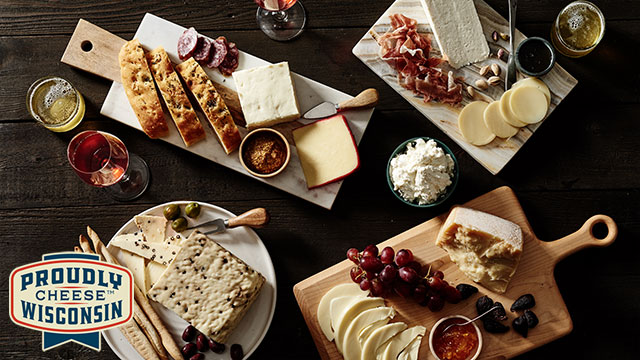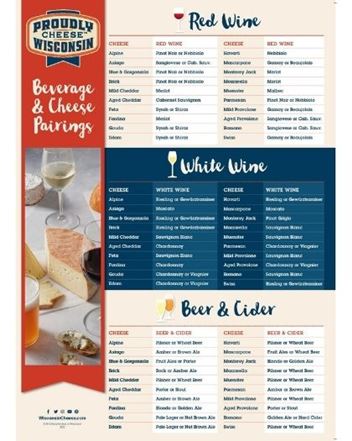
Cheese pairing might seem like a daunting task, but with a few simple guidelines, you’ll be a pairing pro in no time. Follow these Do’s and Don’ts from Dairy Farmers of Wisconsin below:
DO:
- Match the Strengths - One of the first questions to ask when pairing cheese with wine, beer, or really anything is: “do the strengths of the flavors match?” A nose-kicking limburger is going to require an equally assertive pairing—lest your pairing gets overwhelmed by the cheese. Similarly, if you have a light-bodied wine, you’ll want a delicate cheese to match.
- Go with Where It Grows - When you’re not sure what to pick, Dairy Farmers of Wisconsin suggests going by heritage. Uncertain what would go well with Sartori's Classic parmesan? Opt for an Italian wine like pinot grigio. If they both originated from geographically close regions, chances are good they pair well together.
- Find Flavor Bridges - What exactly is a flavor bridge? Like the name suggests, flavor bridges are ingredients you can use to create a stronger connection between cheese and your food or drink of choice. Let’s get practical with an example. One of Dairy Farmers of Wisconsin’s favorite flavor bridges that work with a variety of cheeses is plain-old honey. Honey is a perfect flavor bridge between a salty, briny cheese like feta and sweet port wine.
- Think About Contrast - Dairy Farmers of Wisconsin loves pairing a creamy, salty, and slightly earthy blue cheese with a sweet dessert wine like sherry. Just add a touch of honey as a bridge, and you’ve got a perfect pairing. Opposites attract, and sometimes the best pairings are the ones that draw distinctly different flavors.
- Start Small - Start with no more than 3-5 cheeses and 1-2 wines. This way you can keep your pairings focused and keep your palate from getting overwhelmed. We know, there are just too many amazing cheeses out there and you want to try all of them—but trust us on this one.
DON'T:
- Don’t Pair Strong Cheeses with Delicate Wine, Beer, or Spirits - If you hold tangy, complex, and often pungent cheeses like brick close to your heart, you’ll want them on your cheese board—but take care when it comes to pairing. Remember: you always want to match the strengths. If your wine of choice is a delicate Riesling or a medium-bodied pinot noir, you’ll want more gentle cheeses to match. View Dairy Farmers of Wisconsin’s full Beverage and Cheese Pairing Guide here.
- Don’t Do Full-Size Portions - We love our giant wheels of cheese, but when you’re planning a cheese night, you want to make sure you’re preparing an appropriate amount. Plan for 2-3 ounces of cheese per person. You can always bring out more cheese, but remember that many fresh cheeses must be discarded after being left out for more than two hours—and nothing is more tragic than throwing out leftover cheese.
- Don’t Just Pick Challenging Cheeses - While cheese pairing is a great opportunity to try some more adventurous cheese varieties, Dairy Farmers of Wisconsin advises that you don’t stray too far from your comfort zone. Give guests something familiar, but a step up. If they like cheddar, you can introduce them to something like a BellaVitano, or a slightly aged gouda. You can still get that sharp-edged gorgonzola you’ve been eyeing, just make sure the other cheeses you pick are more familiar.






